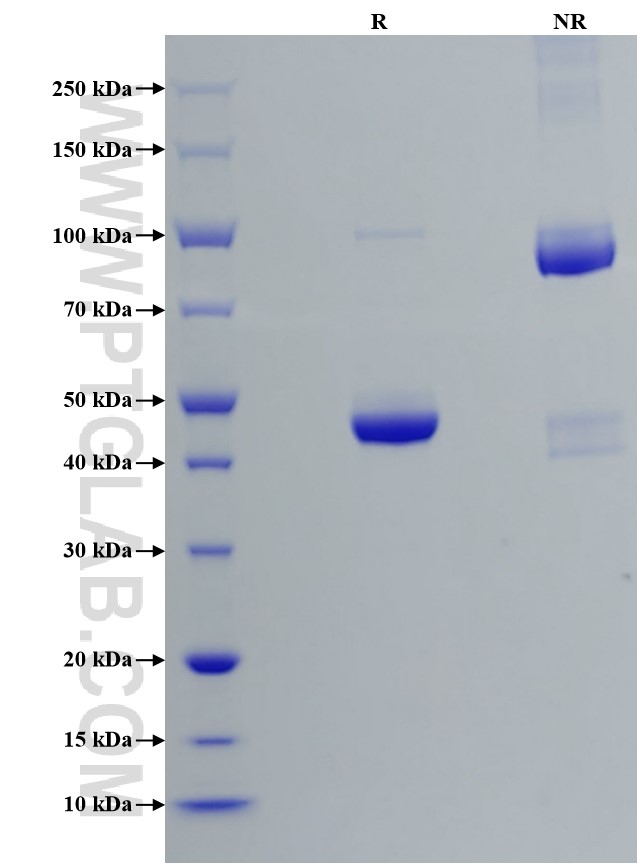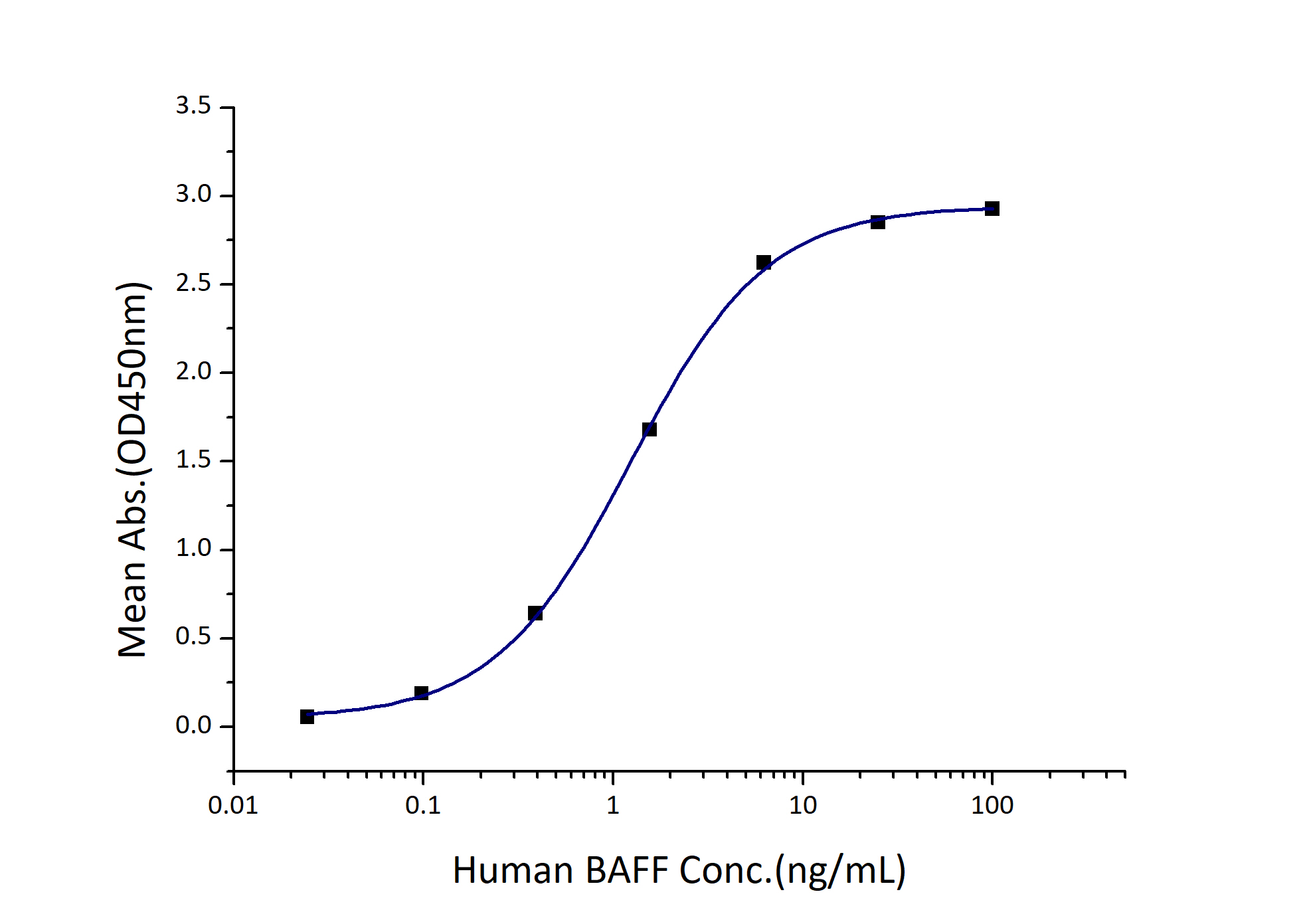Recombinant Human BAFF/TNFSF13B protein (hFc Tag)
种属
Human
纯度
>90 %, SDS-PAGE
标签
hFc Tag
生物活性
EC50: 0.6-2.4 ng/mL
验证数据展示
产品信息
| 纯度 | >90 %, SDS-PAGE |
| 内毒素 | <0.1 EU/μg protein, LAL method |
| 生物活性 |
Immobilized Human BCMA (Myc tag, His tag) at 2 μg/mL (100 μL/well) can bind Human BAFF (hFc tag) with a linear range of 0.6-2.4 ng/mL. |
| 来源 | HEK293-derived Human BAFF protein Ala134-Leu285 (Accession# Q9Y275-1) with a human IgG1 Fc tag at the N-terminus. |
| 基因ID | 10673 |
| 蛋白编号 | Q9Y275-1 |
| 预测分子量 | 43 kDa |
| SDS-PAGE | 45-50 kDa, reducing (R) conditions |
| 组分 | Lyophilized from 0.22 μm filtered solution in PBS, pH 7.4. Normally 5% trehalose and 5% mannitol are added as protectants before lyophilization. |
| 复溶 | Briefly centrifuge the tube before opening. Reconstitute at 0.1-0.5 mg/mL in sterile water. |
| 储存条件 |
It is recommended that the protein be aliquoted for optimal storage. Avoid repeated freeze-thaw cycles.
|
| 运输条件 | The product is shipped at ambient temperature. Upon receipt, store it immediately at the recommended temperature. |
背景信息
TNFSF13B, also known as BAFF, BLYS, TALL1, TNFSF20, ZTNF4 and CD257, is a cytokine that binds to TNFRSF13B/TACI and TNFRSF17/BCMA. This cytokine is expressed in B lineage cells, and acts as a potent B cell activator. The BAFF system promotes B cell survival and differentiation and plays a prominent role in the pathogenesis of autoimmune diseases. It has been shown that BAFF inhibitors are in clinical trials for systemic lupus erythematosus with significant efficacy.
参考文献:
1. Cristian R Smulski et al (2018). Front Immunol. Oct 8;9:2285. 2. Edina Schweighoffer et al (2021). Curr Opin Immunol. Aug;71:124-131. 3. Anne Davidson. (2010). Curr Opin Immunol. Dec;22(6):732-9. 4. Shingo Nakayamada et al (2016).Inflamm Regen. Jul 21;36:6.



